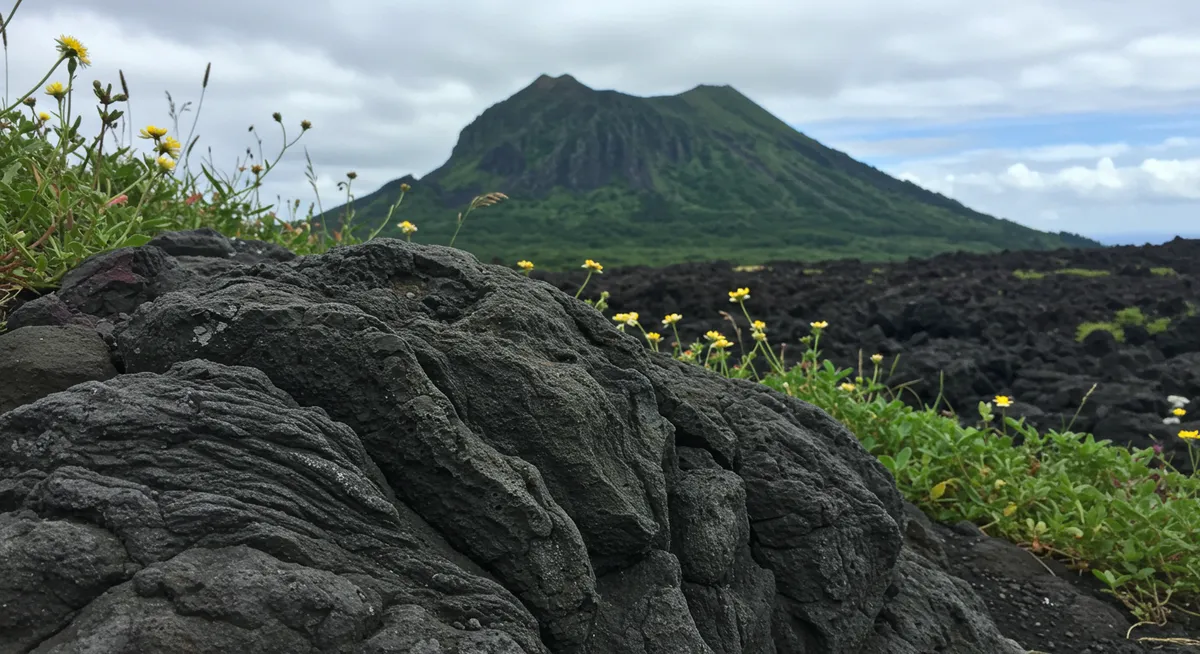
Jeju-si Volcanic Landscapes Guide
Table of Contents
Want to find the best nature experiences for this destination? Chat with our nature tourism specialist!
Get Nature TipsCategory: jejusi-volcanic-landscapes-guide
Discovering Jeju-si's Breathtaking Volcanic Landscapes
I've personally explored the raw beauty of Jeju Island, a place where Earth's fiery past is vibrantly alive in its dramatic terrain. This jeju-si volcanic landscapes guide will take you through the island's most captivating geological formations, offering insights into its unique natural heritage. Prepare to discover a world shaped by ancient eruptions.
Understanding Jeju-si's Volcanic Origins
The island of Jeju is a UNESCO World Heritage site, fundamentally shaped by volcanic activity over millions of years. This unique geology has created a stunning array of landscapes, from towering peaks to intricate underground lava tubes. As an island born from eruptions, Jeju-si offers unparalleled opportunities to witness Earth's dynamic forces firsthand. Its distinctive volcanic soil supports rich biodiversity, impacting everything from local agriculture to its unique ecosystem. For those eager to delve deeper into Jeju Island's remarkable natural features and planning your trip, you can explore comprehensive resources available at touristnature.com. My personal tip: Don't just admire the views; learn about the geology that sculpted them!
Iconic Volcanic Peaks & UNESCO Sites
No jeju-si volcanic landscapes guide would be complete without mentioning Hallasan, South Korea's highest mountain and a dominant central shield volcano. Its summit crater, Baengnokdam, is a breathtaking sight, especially when clouds part. Furthermore, Seongsan Ilchulbong Peak, or "Sunrise Peak," is another UNESCO site, an exquisite tuff cone rising dramatically from the sea. Its distinct crater rim offers panoramic views, making it a favorite for sunrise seekers. I vividly remember my first trek up Seongsan; the ascent is rewarding, culminating in unparalleled ocean vistas. For detailed visitor information on this stunning formation, consult our Seongsan Ilchulbong visitor guide. If you're considering tackling Hallasan, extensive information on the Hallasan National Park trails is also available.
Journey Through Jeju's Mysterious Lava Tubes
Beneath Jeju-si's verdant surface lies an astonishing network of lava tubes, formed by ancient rivers of molten rock. These subterranean passages are incredibly unique, offering a glimpse into geological processes. Manjanggul Cave, one of the finest examples, stretches over 7 kilometers, though only a portion is open to the public. Exploring its vast chambers, adorned with intriguing lava formations like stalagmites and flowstones, is an unforgettable experience. My expert advice: Wear sturdy shoes, as the floor can be uneven and damp. These dark, cavernous spaces reveal a different side of Jeju's volcanic wonders, contrasting sharply with the island's bright, open landscapes. They truly encapsulate the depth of Jeju's volcanic history.
Coastal Volcanic Formations and Unique Ecosystems
The coastline of Jeju-si also showcases spectacular volcanic activity, where powerful ocean currents meet rugged basaltic rock. Jusangjeolli Cliff, with its mesmerizing columnar jointing, offers a prime example of volcanic cooling patterns. These hexagonal pillars, naturally carved by erosion, are simply awe-inspiring. Furthermore, the island's diverse volcanic topography has created unique ecosystems, from dense forests to coastal wetlands. When visiting, keep an eye out for diverse flora and fauna adapted to this specific environment. For more insights into Jeju-si's broader natural attractions, check out our guide to Jeju-si nature attractions. I always find the contrast between the dramatic cliffs and the serene ocean endlessly captivating.
Best Trails for Volcanic Exploration
To truly appreciate the jeju-si volcanic landscapes, exploring its extensive network of hiking trails is essential. Beyond the well-known Hallasan routes, numerous "Oreum" (parasitic cones) offer accessible and rewarding treks. For instance, Darangswi Oreum provides a challenging but scenic ascent, offering panoramic views of the island's volcanic terrain. Furthermore, the Olle Trails often incorporate coastal volcanic features and forest paths, providing varied experiences. Before embarking, always check trail difficulty and weather conditions. From my own hiking experiences, I highly recommend bringing enough water and wearing appropriate gear. For a comprehensive list of paths suited for different skill levels, refer to our guide on the best hiking trails in Jeju-si.
Frequently Asked Questions
What is the best time to visit Jeju-si for volcanic exploration?
Are the volcanic sites in Jeju-si accessible for all fitness levels?
What should I bring when visiting Jeju-si's volcanic attractions?
Jeju-si's volcanic landscapes offer a truly unparalleled journey through Earth's geological marvels. From the majestic heights of Hallasan to the enigmatic depths of its lava tubes and the dramatic coastal formations, each site tells a story of ancient eruptions and enduring natural beauty. This jeju-si volcanic landscapes guide has aimed to illuminate the island's unique heritage. By embracing the diverse volcanic terrain, visitors gain a profound appreciation for its ecological significance. Continue your exploration and discover more of Jeju Island's captivating wonders that await your adventure.